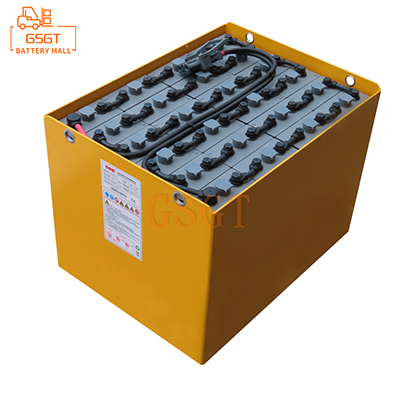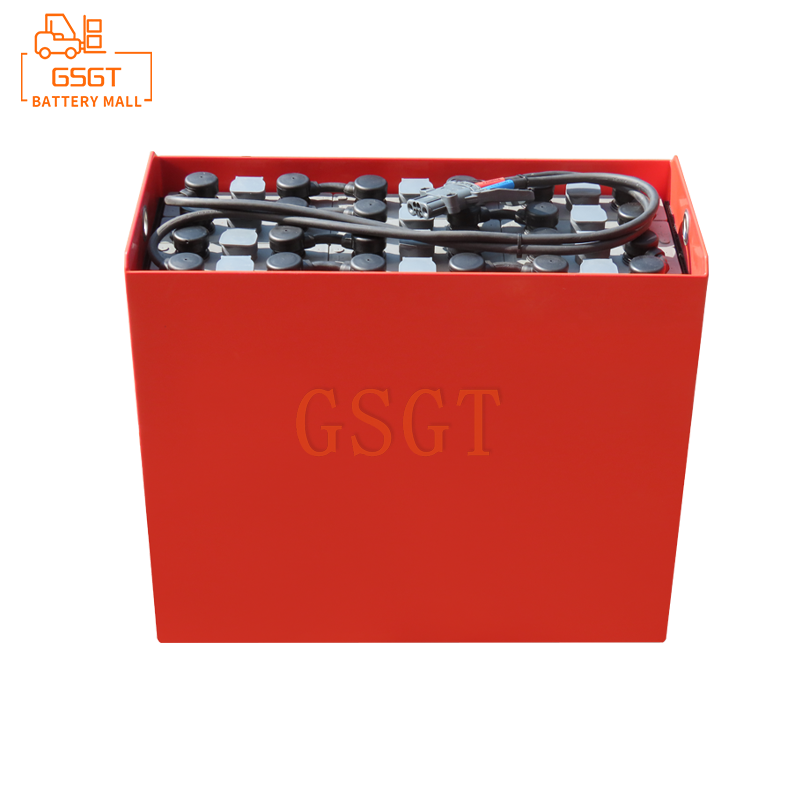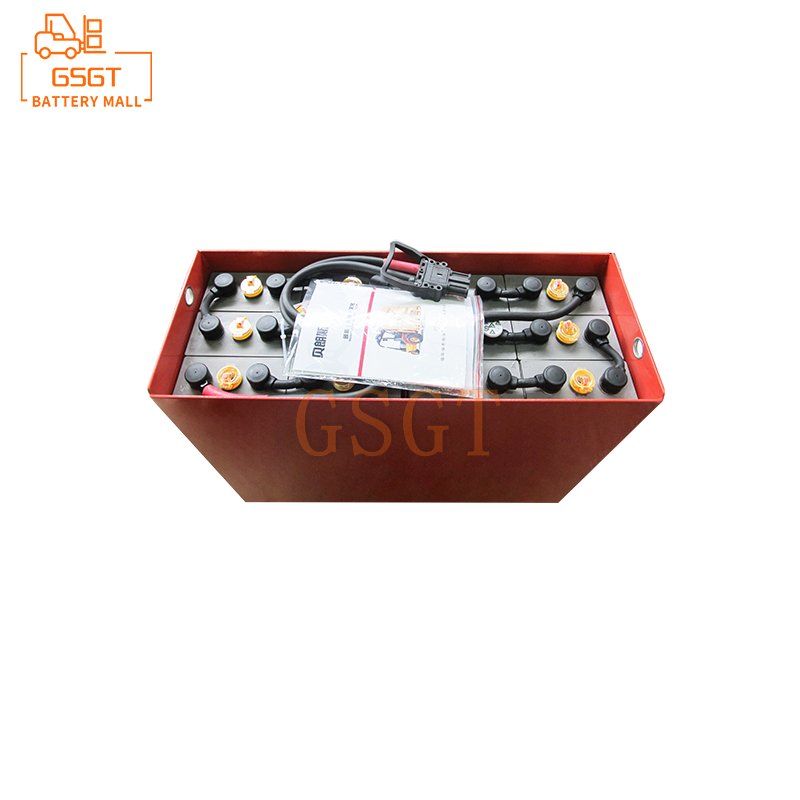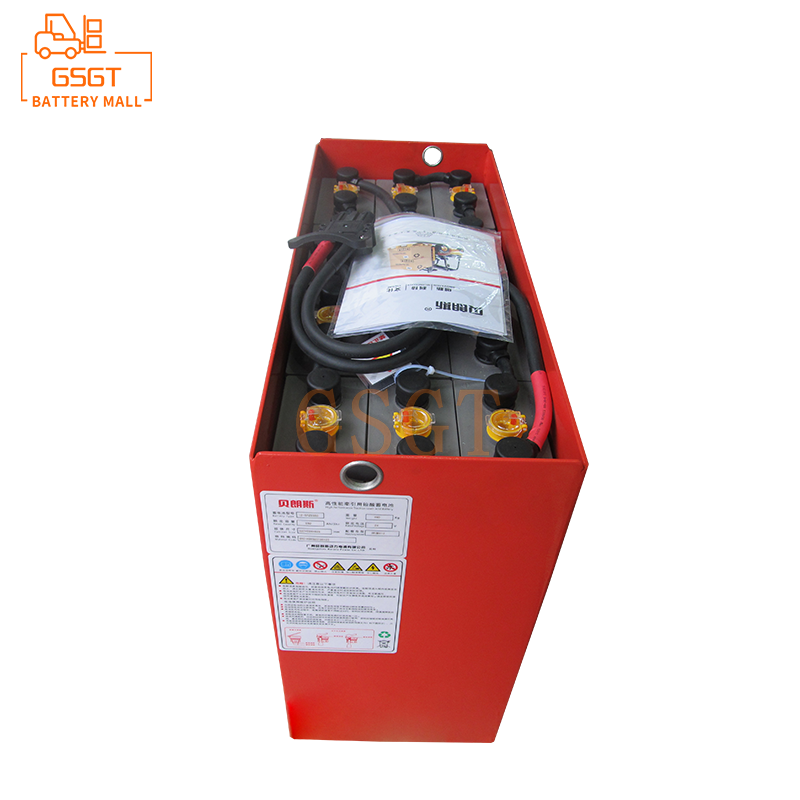Time:2025-04-12 09:50:00
Browse:558
In the field of industrial logistics, forklift is an important handling equipment, and its power source is very important. The traction lead-acid battery has become the preferred power source for many forklifts by virtue of its own advantages. However, there are many lead-acid battery products on the market, and the quality is uneven. How to select high-quality products suitable for forklifts has become a key issue for enterprises.
1, clear forklift operation needs
(1) Work intensity
The operation intensity of the forklift determines the capacity and discharge capacity of the battery required. If the forklift needs to operate continuously for a long time, for example, in a large logistics warehouse, the forklift carries goods uninterrupted from morning to night. In such high-intensity operation scenarios, batteries with large capacity and high discharge rate are needed to ensure the power stability of the forklift during long-term operation and avoid frequent interruption of operation due to insufficient power, which affects work efficiency. On the contrary, in some places where the amount of work is small and the working time is scattered, such as small factories that occasionally use forklifts to carry a small amount of goods, the requirements for battery capacity and discharge capacity are relatively low, and smaller capacity and more economical products can be selected.
(2) Operating environment
The operating environment has a significant effect on the performance and life of the battery. In the high temperature environment, such as the steel plant workshop, the temperature is often higher than 40℃, the chemical reaction speed of the battery is accelerated, the self-discharge rate is increased, at this time, the battery with good high temperature resistance should be selected, and the plate material and electrolyte formula should be able to adapt to high temperature, prevent plate deformation, electrolyte drying, and ensure the stable operation of the battery. In low temperature environments, such as cold storage, the temperature may be as low as minus ten degrees Celsius, the viscosity of the battery electrolyte increases, the internal resistance rises, and the capacity will decrease significantly. In this case, it is necessary to select a battery with excellent low temperature performance, which can maintain a high discharge capacity at low temperatures to ensure the normal operation of the forklift in the cold storage. If the working environment is wet and dusty, such as a coal mine warehouse, the battery must have good sealing to prevent water and dust intrusion, avoid internal short circuit, corrosion and other problems, and extend the battery life.
(3) Forklift truck type and load
Different types of forklifts have different requirements for batteries. A counterweight forklift truck is usually used to carry heavy loads and requires a large current when starting and accelerating. Therefore, the battery should have a high instantaneous discharge capacity to provide powerful power to support the forklift truck to quickly start and move heavy loads. The electric pallet truck, mainly on the flat ground to carry light goods, driving speed is relatively slow, the battery instantaneous discharge requirements are not high, but the battery energy conversion efficiency and endurance have certain requirements, can choose high energy conversion efficiency, stable battery life. In addition, the load weight of the forklift is directly related to the battery power consumption, the heavier the load, the greater the power consumption, the battery capacity should be reasonably selected according to the actual load situation, to ensure that the forklift can complete the corresponding task under full load.
2. Pay attention to the key performance indicators of the battery
(1) Capacity
Capacity is an important indicator to measure how much energy the battery stores, usually expressed in ampere-hours (Ah). Generally speaking, the larger the capacity, the longer the range of the forklift. In the selection, the required capacity should be estimated according to the operation demand and operation route of the forklift.
(2) Discharge ratio
Discharge rate refers to the current output value of the battery when it releases its rated capacity within a specified time, and the unit is C. For equipment such as forklifts that need to start, accelerate and climb frequently, batteries with high discharge rate are crucial. For example, a battery with a discharge rate of 2C means that it can discharge at twice the rated capacity in half an hour. At the moment of forklift starting, the high discharge rate battery can provide a strong current, so that the forklift can start quickly, and ensure the continuous power output when carrying heavy objects and climbing, so as to avoid the stagnation of the forklift due to insufficient power. Common forklift traction lead-acid battery discharge rate between 1C-3C, should be selected according to the actual conditions of forklift products with appropriate discharge rate.
(3) Cycle life
Cycle life reflects the durability of the battery, that is, the number of charge and discharge cycles that the battery can normally use under certain charge and discharge conditions. Under normal circumstances, the longer the cycle life, the higher the cost performance of the battery. In actual use, the cycle life is affected by many factors, such as the depth of charge and discharge, charging mode, use environment and so on. It is necessary to choose the battery with reliable quality and long cycle life, and pay attention to the correct charging and discharging method during use to extend its cycle life.
(4) Energy conversion efficiency
Energy conversion efficiency refers to the efficiency with which a battery converts stored chemical energy into electrical energy and outputs it. The high energy conversion efficiency means that with the same power input, the battery can provide more available electricity for the forklift, reducing energy loss and reducing the cost of use. At present, the energy conversion efficiency of high-quality lead-acid batteries can reach 80%-90%. In the selection, the energy conversion efficiency parameters of different brands of products can be compared, and the most efficient products are preferentially selected, especially for enterprises that use forklifts for a long time and a high frequency. Batteries with high energy conversion efficiency can significantly reduce operating costs.
3. Consider the quality and reliability of the battery
(1) Plate quality
Plate is the core component of the battery, and its quality directly affects the performance and life of the battery. The high quality plate is made of high purity lead calcium alloy, which has good electrical conductivity and corrosion resistance. In the manufacturing process, the paste of the plate is uniform and tight, which can effectively prevent the active substance from falling off. For example, some well-known brands use advanced continuous casting and rolling processes to produce plates, which makes the internal structure of the plates more uniform and the performance more stable.
(2) Electrolyte quality
The electrolyte plays a key role in the chemical reaction of the battery. High quality electrolyte purity, low impurity content, can ensure the smooth chemical reaction inside the battery, improve the battery performance. At the same time, the density and level of the electrolyte will also affect the charging and discharging effect of the battery. For example, the electrolyte density is too high, may lead to plate vulcanization, shorten the battery life; If the liquid level is too low, it will expose the plate to the air and accelerate plate corrosion. When selecting batteries, we should pay attention to the quality of the electrolyte, and choose products that use high-quality sulfuric acid and deionized water to prepare the electrolyte. In addition, some batteries are equipped with automatic replenishment devices, which can keep the electrolyte level stable, convenient for users to use, and can give priority to such products when conditions permit.
(3) Shell material and structure
The shell of the battery not only protects the internal components, but also affects its sealing and heat dissipation performance. The housing should be made of a high-strength, corrosion-resistant material, such as engineering plastics. The high-quality housing has good impact resistance, which can protect the internal structure of the battery from damage in the daily bumping and vibration environment of the forklift truck. In terms of structural design, a reasonable shell structure helps the battery to dissipate heat and prevent performance degradation due to overheating. For example, some enclosures are designed with cooling fins to increase the heat dissipation area and improve heat dissipation efficiency. In addition, good sealing can prevent the leakage of electrolyte and the intrusion of external impurities, ensure the stability of the internal environment of the battery and extend the service life of the battery. When purchasing, check whether the shell has cracks, deformation and other defects, and whether the seal is tight.
4. Brand and after-sales service
(1) Brand reputation
Brand is an important embodiment of product quality and reputation. Choosing a well-known brand of traction lead-acid battery means that the product is more guaranteed in terms of quality, performance and reliability. Well-known brands usually have advanced production technology, strict quality control system and rich research and development experience, and can continue to introduce products with excellent performance.
(2) After-sales service
Perfect after-sales service is essential to ensure the normal use of the battery. Quality after-sales service includes timely technical support, convenient maintenance service and reasonable quality assurance policy. When users encounter problems in the process of use, the manufacturer can respond quickly and provide professional technical guidance to help users solve the problem. If the battery fails, the manufacturer should have the ability to quickly repair, shorten the maintenance time, and reduce the loss caused by equipment downtime to the user. In addition, a reasonable warranty policy allows users to buy products without worries.
The selection of lead-acid batteries suitable for forklifts requires comprehensive consideration of many factors such as forklift operation requirements, battery performance indicators, quality reliability and brand after-sales service. Only through comprehensive and detailed analysis and comparison can we choose the right power source for the forklift, ensure the efficient and stable operation of the forklift, reduce enterprise operating costs, and improve production efficiency.

$3405

$865

$1635

$1310

MESSAGE
Professional And Efficient
Security
Affordable Price
Professional Services